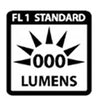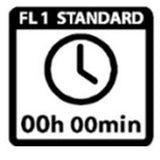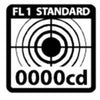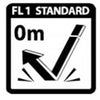tac·ti·cal - relating to or constituting actions carefully planned to gain a specific military end
Tactical Flashlights are high powered lights designed for use by law enforcement and the military. With durable construction and emitting a much brighter light than the average flashlight they make a great tool for a variety of situations.What makes a flashlight “Tactical”?
Tactical flashlight are designed to be used in variety of harsh environments and situations. With heavy duty construction, they are built to work when you need them. So what are the characteristics that set them apart from your average flashlight? The most important components are the following:
Durable Construction - If a tactical flashlight can’t hold up in a variety of tough situations, then it is worthless. Tactical lights need to be made of strong materials to endure occasional drops and harsh conditions. Tactical flashlights are constructed with aero grade aluminum alloy with a military grade hard-anodized finish for maximum durability.
Brightness /High Lumen Output - A lumen is the measure of the amount of visible light emitted and the way to indicate the brightness of an LED. The more lumens, the farther the light will travel as well. High lumen flashlights produce a brighter, wider beam of light of 500 lumens or more. While not all situations call for such a bright light, there are instances where such brightness is warranted such as in search and rescue situations as well as identifying potential threats.
Multiple/Special Light Modes - Tactical flashlights are typically used in situations where various brightness levels will be needed. The very bright light you need in one situation may be way too bright for another. Multiple light modes give you the ability to adjust to situations as needed. Additionally, some tactical lights have special modes as well. SOS and beacon modes are for emergency or survival type situations while strobe is used to disorient a perpetrator in a self-defense situation.
Easy One-Touch Interface- Tactical flashlights are designed for one-handed operation. Tactical lights typically have a side switch as well as a tail-cap switch. The tail-cap switch allows the users to hold the light in an ice pick type grip and to quickly and easily operate the switch with the thumb. Additionally, some lights also have a tailcap clicky switch for momentary activation.
Water / Impact Resistant - Tactical lights need to be able to withstand a variety of situations including occasional drops and exposure to water. Impact resistance is the highest level in meters the flashlight can be dropped onto concrete and still operate. Tactical lights have an impact resistance of 1m or higher. Outdoor use means exposure to the elements. Water resistance is based on an IPX rating. IPX4 rating means the light is resistant while IPX7 and IPX8 mean the light is waterproof and can be submerged in water and still operate.
Parts of the Tactical Flashlight

Head / LED Housing - The head or LED housing protects the LED bulb.
Lens - It’s important to consider the material used and type of lens in a tactical flashlight. The lens protects the vital components that illuminate the flashlight - the bulbs and reflector. A quality, well designed lens in conjunction with the reflector, can affect the brightness and beam distance produced.
LED Bulb - LED is the bulb of choice for tactical flashlights due to its superior technology. LED bulbs are very durable and energy efficient and the light they produce is extremely bright.
Reflector - The reflector is an important component in the way a flashlight projects light. Using its parabolic shape (u-shape) design, it gathers the light from the bulb into a focal point. The shape of the reflector dictates the type of beam a flashlight will produce. A wide and flat reflector will produce a broader light (flood) while a more narrow and curved reflector will produce a longer, more concentrated light (throw.)
Bezel - The bezel is the rim that surrounds the lens and keeps it in place. Some lights have a crenulated or strike bezel that is shaped like a crown and can be useful for self-defensive purposes.
Tail Cap - Located at the opposite end of the flashlight from the head, the tailcap secures the battery compartment.Tail Switch - Mounted on tail cap, the tail switch allows you to quickly and easily operate the flashlight using your thumb in an “icepick” type grip. With your arm in an upright position, this type of operation also allows the user to have optimum control over the beam placement which is important in high intensity situations.
Battery Compartment - The batteries are stored in the body of the flashlight. Most tactical flashlights use rechargeable Li-ion batteries for superior performance. The most common sizes used are 18500, 18650 and RCR123A. Most lights accept non-rechargeable batteries to be substituted as well. Disposable lithium batteries are more powerful than alkaline batteries and while they are more expensive, are the better choice to have on hand in case of an emergency.
Accessories
Lanyard & Pocket Clip - If your light isn’t convenient to carry, you won’t have it available when you most need it. The lanyard cord attaches to the tail cap of the flashlight that allows you to carry around your wrist. The pocket clip is a removable metal clip to allow the flashlight to be attached to your pocket or belt.
Filters or Dedicated RGB LEDs - Light filters are inserted over the top of the lens to change the light output for certain situations and are available in Red/Blue/Yellow/Green. Dedicated RGB LED’s serve the same purpose, but are conveniently built in and available in Red/Blue/Green.
- Red- night vision
- Blue/Yellow- locating blood
- Green - Non threatening to animals
Specifications (ANSI FL1 Standards)
In 2009, the American National Standards Institute (ANSI) created a new specification for standardizing flashlight performance to allow direct comparisons to be made between flashlights of different manufacturers. While not mandatory, most manufacturers have adopted this standard and list these specifications on their packaging. Understanding these standards will allow you to better compare flashlights and choose the right light for your needs. The six criteria used are:
- Light Output (Lumens)
- Beam Distance (Meters)
- Runtime (Hours)
- Peak Beam Intensity (Candela)
- Impact Resistance (Meters)
- Water Resistance (IPX Rating)
 Light Output: The total amount of light that comes out of the front of the flashlight, measured in Lumens. The more powerful the LED and battery, the higher lumen output a flashlight can have. Light output must be considered in conjunction with beam intensity and distance to get a better idea of how the light will work for your needs.
Light Output: The total amount of light that comes out of the front of the flashlight, measured in Lumens. The more powerful the LED and battery, the higher lumen output a flashlight can have. Light output must be considered in conjunction with beam intensity and distance to get a better idea of how the light will work for your needs.
 Run time: Run time is defined as the amount of time, rounded to the nearest quarter hour, until output drops below 10%. When looking at a flashlight specs, the max run-time refers to the lowest mode setting. If you will need a brighter light for longer periods of time you will need to check out the run-times for turbo and higher modes and most likely choose a larger flashlight that can accommodate more battery power.
Run time: Run time is defined as the amount of time, rounded to the nearest quarter hour, until output drops below 10%. When looking at a flashlight specs, the max run-time refers to the lowest mode setting. If you will need a brighter light for longer periods of time you will need to check out the run-times for turbo and higher modes and most likely choose a larger flashlight that can accommodate more battery power.
 Beam Distance: This is the measurement in meters of the distance the light will shine before it decreases to the level of the light from a full moon. Beam distance is determined by the reflector and lens to produce either a long spot light type beam or a shorter flood type beam.
Beam Distance: This is the measurement in meters of the distance the light will shine before it decreases to the level of the light from a full moon. Beam distance is determined by the reflector and lens to produce either a long spot light type beam or a shorter flood type beam.
 Peak Beam Intensity: This is the brightest point in the beam and measured in candela. Just like beam distance, the peak beam intensity is determined by the reflector and lens. A low beam intensity would be a more dispersed or flood light while a higher beam intensity would be a more focused or spot beam. Flood beams work in close situations, but do not provide enough light to illuminate distant objects. Spot beams on the other hand, are great for lighting distant objects, but are too bright for close situations.
Peak Beam Intensity: This is the brightest point in the beam and measured in candela. Just like beam distance, the peak beam intensity is determined by the reflector and lens. A low beam intensity would be a more dispersed or flood light while a higher beam intensity would be a more focused or spot beam. Flood beams work in close situations, but do not provide enough light to illuminate distant objects. Spot beams on the other hand, are great for lighting distant objects, but are too bright for close situations.
 Impact Resistance: This is the height in meters that you could drop a flashlight from onto concrete and it still run properly. This is to ensure that occasional drops will not limit the functionality of the flashlight. Most tactical lights have an impact resistance of at least 1m.
Impact Resistance: This is the height in meters that you could drop a flashlight from onto concrete and it still run properly. This is to ensure that occasional drops will not limit the functionality of the flashlight. Most tactical lights have an impact resistance of at least 1m.
 Water Resistance: There are three levels of water resistance that are found, those are IPX4, IPX7, and IPX8.
Water Resistance: There are three levels of water resistance that are found, those are IPX4, IPX7, and IPX8.
IPX4: water-resistant, or water splashed from all directions
IPX7: water-proof, or temporary submersion at 1 meter for 30 minutes
 IPX8: submersible, or continuous submersion at some specified depth for 4 hours
IPX8: submersible, or continuous submersion at some specified depth for 4 hours
The Top 5 Best Tactical Flashlights
Now that you have a better understanding of tactical flashlights and the available options, take a look at our top 5 tactical flashlight list to find the perfect light for you.
| Brand/Model | Lumens | Throw (m) | Run time (h) | Price |
| Klarus XT11GT | 2000 | 316 | 170 | $89.95 |
| Fenix PD35 TAC | 1000 | 200 | 140 | $71.95 |
| Nitecore P12 | 1000 | 232 | 520 | $59.95 |
| Eagletac T25C2 | 1180 | 262 | 150 | $85.50 |
| Surefire G2X | 1000 | 45 | $63.00 |
